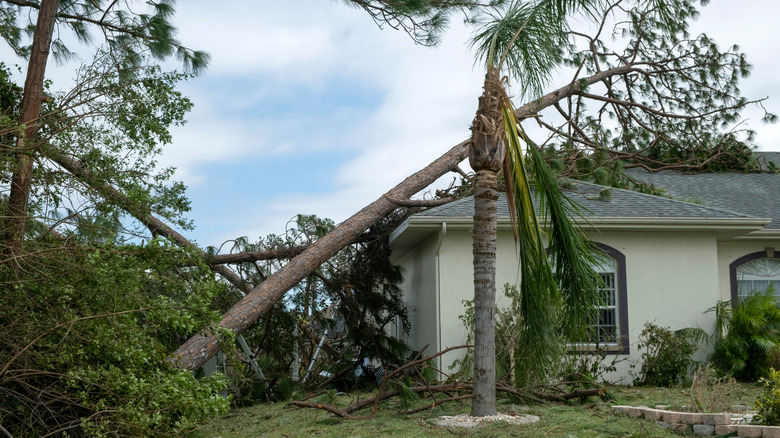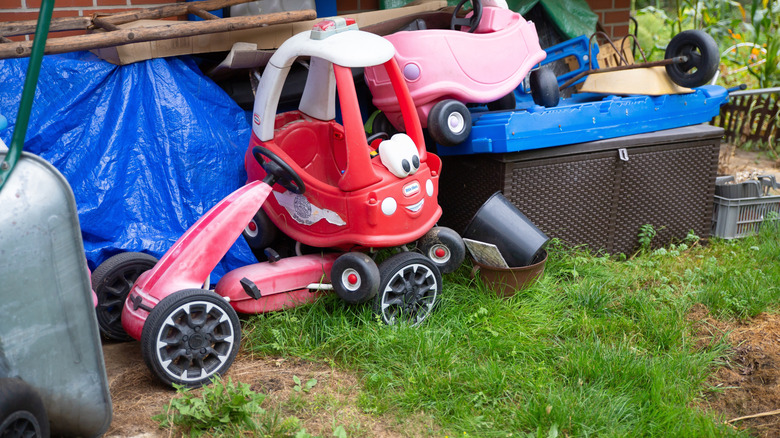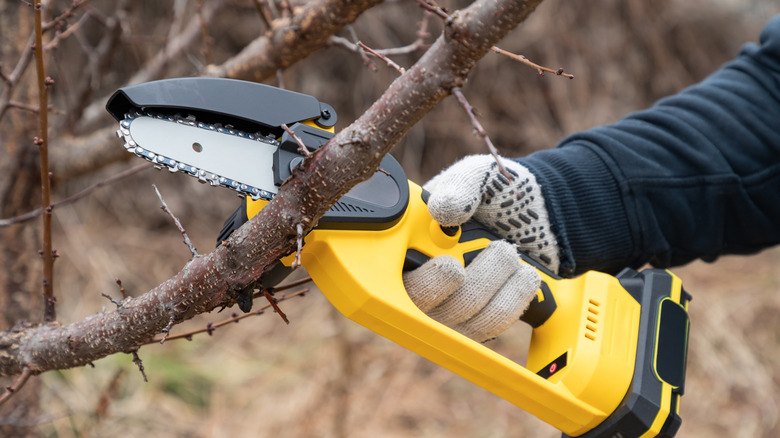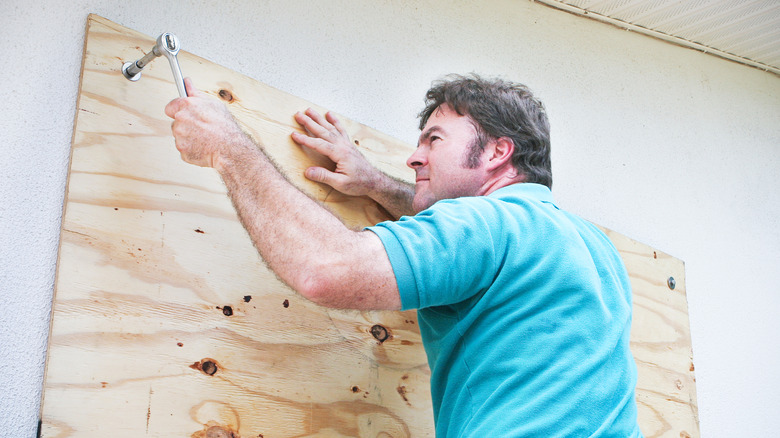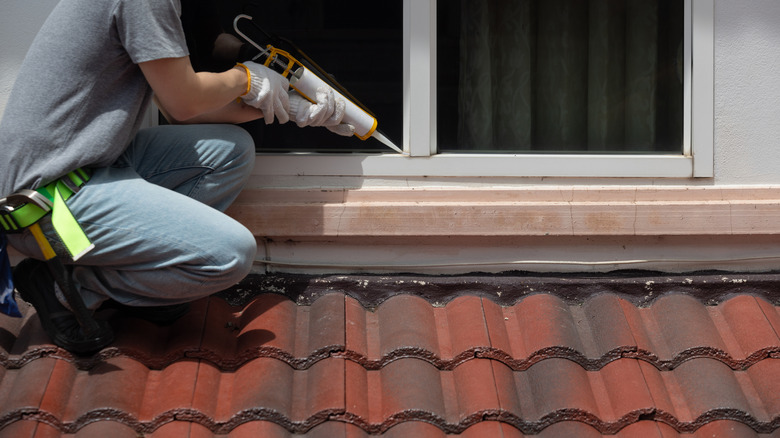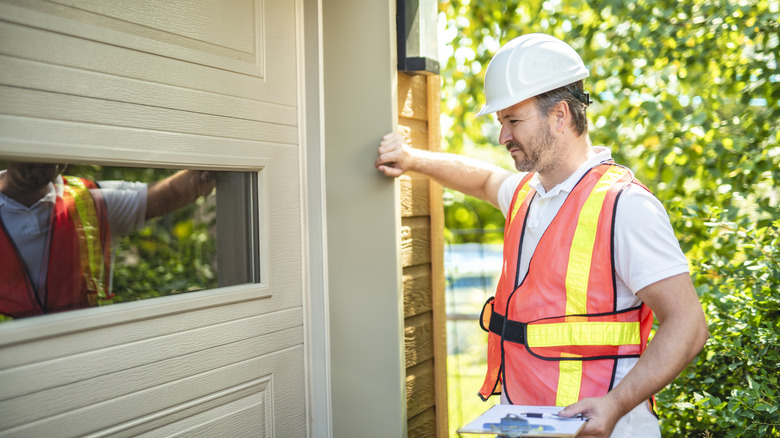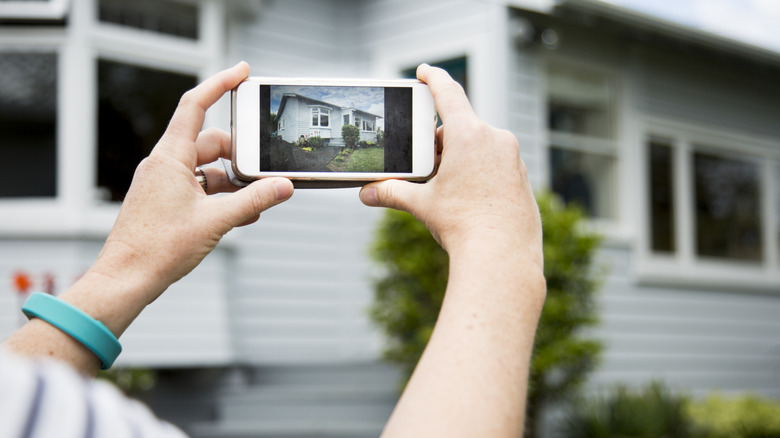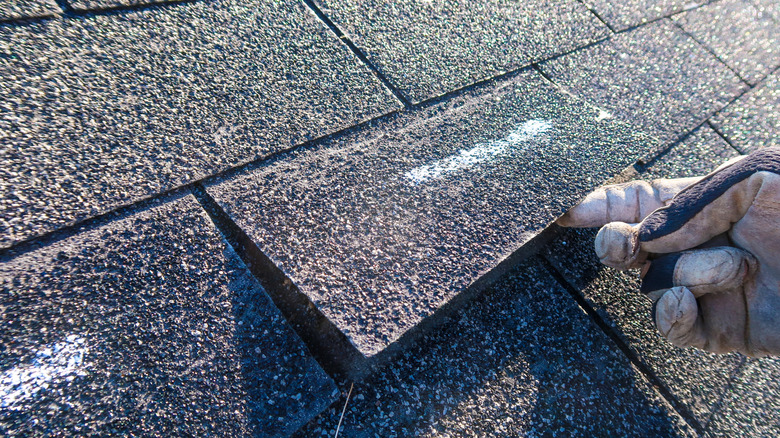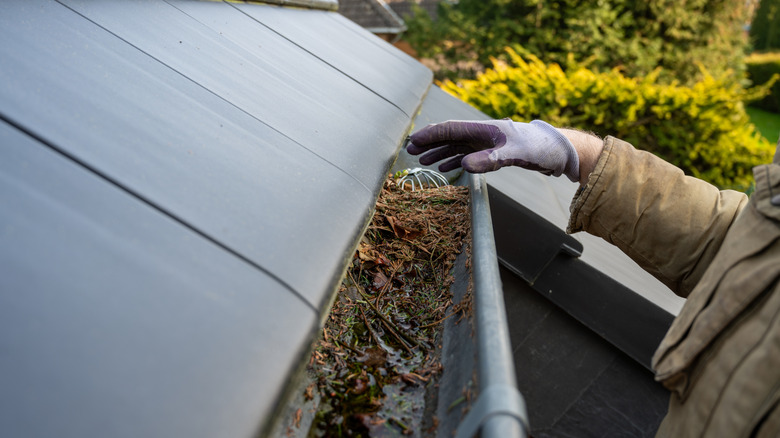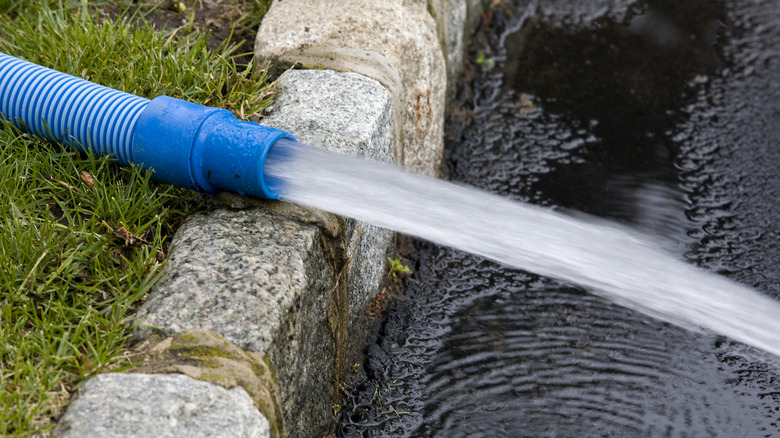The Essential Checklist To Prepare Your Home For Tropical Storms Or Hurricanes
We may receive a commission on purchases made from links.
If you're in the path of a hurricane or tropical storm, it's crucial that you prepare your home for severe weather. Even if you've been through serious storms before, it's always worth double-checking your home's safety, both inside and out. There are plenty of ways to prepare your home for a hurricane, and taking action before the storm hits is the best approach. Both hurricanes and tropical storms bring the chance of high winds, heavy rain, and flooding that can threaten your home. Just a few simple precautions can improve how your property weathers the storm – and if damage occurs, you'll be better prepared to handle repairs and insurance claims.
The annual Atlantic hurricane season runs from June through November. Don't skip preparation in the latter half of the season, as several major hurricanes occur in the fall. When preparing for a hurricane or tropical storm, it's important to know what each storm actually is. Both begin as clusters of thunderstorms, known as tropical disturbances, drawing strength from the combination of warm water and low atmospheric air pressure nearby. It may start as a tropical depression with winds over 39 mph, then increase to a tropical storm with sustained winds of over 40 mph. Once the storm's winds climb to 74 mph, it's officially a hurricane. The National Oceanic and Atmospheric Administration (NOAA) Hurricane Center monitors the tropics and informs the public of tropical storm and hurricane watches (conditions possible) or warnings (conditions occurring). Keep an eye on the forecast, and don't neglect these essential tasks before the wind starts howling and the rain pours down.
Gather loose items from outside
Items left outside, such as lawn chairs, tools, and toys, can quickly become projectiles when picked up by strong winds. These airborne items quickly pose a threat to your windows and door. Start preparing your home for the coming storm by gathering and relocating any loose outdoor items, such as patio furniture, to your garage. If you have a grill or other heavy equipment outside that's hard to move, make sure you anchor it securely to the ground. Don't overlook bringing in any hanging plants or window boxes, either.
Trim branches near your home
You should prune your trees outside your home, removing dead, loose, or low-hanging branches. These can quickly become airborne projectiles due to high wind. Pay attention to any branches near a power line as well, or those that can cause direct damage to your roof or siding. Don't wait until a hurricane warning, as counties may delay curbside and bulk trash pickup. This leaves all of those branches sitting on the road, creating a risk if the wind picks them up.
Board up your windows and glass-panel doors
Flying objects and debris can damage your home's glass, leading to injury and causing pressure build up within your home. Never tape your windows to keep them from shattering — it's a dangerous myth that can lead to larger shards of glass after breakage. If your home lacks hurricane shutters, properly board up your windows with plywood, ideally at ⅝ inches thick. Cut the boards to the correct size, and secure them with sturdy bolts or screws, covering the entire window. Double-check for any gaps or cracks between the boards and glass for maximum protection.
Seal any cracks
One of the biggest home concerns during a severe storm is water damage, particularly from wind-driven rain. High winds can force precipitation into your home through small cracks. Tiny openings in your stucco or siding can be an entry point for damaging moisture and need to be sealed with caulk. Next, look for any gaps near your vents, windows, pipes, or in the walls of your home. If your area is at risk for storm surge or flooding, this task is even more crucial. As the water rises above sea level, it can seep into any weak point of entry.
Reinforce your garage door
Intense wind and rain can damage a standard garage door, potentially forcing it out of the opening completely. In the aftermath of 1992's Hurricane Andrew, researchers found garage door failure was a common source of building damage, emphasizing how important it is to reinforce your garage door. A blown-out garage door can cause major damage where it lands — and once wind enters your home, it creates a dangerous pressure buildup. The resulting pressure difference can blow out the windows and doors, and may even cause your roof to collapse.
Document your home's condition
If your property sustains serious or expensive damage from the storm, you will need to prepare to file a homeowner's claim. You can make the process more efficient and easier to fight a denial by documenting your property condition before the storm. After photographing your home's interior, exterior, and landscaping, store the images in the cloud or email them to yourself for easy access. Pay extra attention to the roof, siding, windows, and doors, as these are common claim areas by homeowners after severe weather events.
Check your roof for loose shingles
While photographing your roof, look over its condition as well, noting any loose or rotting shingles. Heavy rain can seep into these weak spots, and strong winds may blow shingles away, leaving your home vulnerable to costly water damage. Secure the shingles as much as possible, then cover them with a durable roof tarp, such as a CARTMAN Waterproof Green Tarp from Amazon, to help minimize water intrusion during the storm.
Clean out your home's gutters
Tropical storms and hurricanes bring significant rain in a short time. For example, Hurricane Harvey dumped more than 50 inches of rain in its path, causing mass flooding in many areas. Clogged and blocked gutters can't let water flow properly; therefore, cleaning them out before a storm is crucial. This helps rainwater flow freely, reducing the risk that it backs up on your roof or puddles around your home's foundation. High winds can also blow debris into the gutters, and if they're already clogged, the resulting overflow becomes even more dangerous.
Examine your insurance policy
Before a storm makes landfall in your area, review your homeowner's insurance information so you know what is and isn't covered. Most traditional policies don't include flooding, which means you'll require a separate policy through the National Flood Insurance Program (NFIP) to protect your home. Planning is essential, as most policies require a 30-day waiting period before coverage begins. Review your coverage for flooding, wind damage, and other storm-related issues, and make sure you know how and when to report a claim.
Lower the water level in your pool
Flooding from heavy rain is a common concern during hurricanes and tropical storms, but never drain your pool completely. Pouring rain can put extra pressure on your pool, and if empty, it can float up or even crack from the stress. It's better to lower your pool's water level by a few inches 12 to 24 hours before the storm's arrival if you're concerned about flooding. You should also shock your pool before the storm hits to help prevent the formation of algae and bacteria.
Consider swapping your gravel
The smallest things outside can become a potential projectile, even your landscaping gravel. If your yard contains pea or rock gravel, think about replacing it with something safer and softer, such as mulch or bark chips. The lighter materials will cause less damage in case a strong gust of wind picks them up, reducing the chance of denting siding or breaking glass during the storm. It may not be possible to remove all the gravel before a storm, but clearing areas closest to your home is worthwhile.
